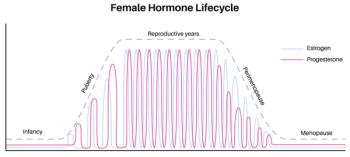
Hypertension and Diabetes: Combating a Deadly Duo
Treatment of hypertension can minimize both microvascular and macrovascular complications of diabetes and helps prevent nephropathy and cardiovascular events.
Q: How best to lower blood pressure in patients with diabetes?
A: Treatment of hypertension can minimize both microvascular and macrovascular complications of diabetes and helps prevent nephropathy and cardiovascular events. In patients with type 2 diabetes mellitus, the impact of blood pressure control on microvascular and macrovascular health may be equal to or even greater than that of strict glycemic control.1
Pathophysiology of diabetes-related hypertension. Three mechanisms contribute to the development of hypertension in patients with diabetes:
•Hyperinsulinemia (in type 2 diabetes).
•Expanded plasma volume.
•Increased arterial stiffness.
Treatment must target all of these mechanisms or their effects.
Hyperinsulinemia increases sympathetic activity and promotes sodium retention. Hyperinsulinemia is countered with lifestyle changes (weight loss) and insulin sensitizers (biguanides and thiazolidinediones). In addition, there is some evidence that angiotensin-converting enzyme (ACE) inhibitors and angiotensin receptor blockers (ARBs) increase glucose transporter-4 concentration, activate hexokinase, and serve as insulin sensitizers at the nitrous oxide level.2-5 β-Blockers are effective at blocking increased sympathetic activity. Sodium restriction and diuretics are effective at countering sodium retention.
Expanded plasma volume responds to weight loss and to thiazide diuretics. Increased arterial stiffness is often the result of increased sodium deposition in the arterial wall, poor glycemic control, and by-products of glycation. Improved glycemic control is effective at preventing arterial stiffness, and thiazide diuretics slowly deplete the sodium that has been deposited in the arterial wall.
Selecting the regimen. In patients with diabetes, the goal of antihypertensive treatment is a blood pressure of less than 130/80 mm Hg. To achieve this goal, most patients require a minimum of 2 agents.
When hypertension is initially diagnosed in a patient with diabetes, the first agent prescribed is typically an ACE inhibitor. Although ACE inhibitors are not powerful antihypertensives, they are renoprotective and reduce the incidence of cardiovascular events in both patients with type 1 disease and those with type 2.6-14 If a patient cannot tolerate ACE inhibitors, then an ARB may be selected as the initial agent. Finally, if neither ACE inhibitors nor ARBs are tolerated, a non-dihydropyridine calcium channel blocker (eg, diltiazem, verapamil) is indicated.12 These particular calcium channel blockers offer a level of renoprotection comparable to that of ACE inhibitors in patients with type 2 diabetes.15
Which drug to use as a second-line agent depends on the clinical history of the individual patient. Because most patients with type 2 diabetes have an expanded plasma volume, thiazide diuretics are usually ideal second agents in this population.12,16 At a dosage of 6.25 to 12.5 mg per day, thiazide diuretics rarely produce electrolyte abnormalities. In fact, combining an ACE inhibitor or ARB with a thiazide diuretic offsets the potential for hypokalemia that can be a problem when the ACE inhibitors or ARBs are used alone; in addition, the synergistic effect of agents from these classes is beneficial in reducing blood pressure. However, if a patient has a history of a previous myocardial infarction or coronary artery disease, select a β-blocker as second agent.
The choice of a third-line agent is a more difficult decision. If a β-blocker was selected as the second-line agent, then a thiazide diuretic can be added. Conversely, if a thiazide diuretic was selected as the second agent, then a β-blocker can be added-provided there are no contraindications. You may prefer to avoid β-blockers in patients who have autonomic dysfunction (eg, gastroparesis, orthostatic hypotension, erectile dysfunction) but no overt coronary artery disease. However, many patients with autonomic dysfunction have undiagnosed cardiac autonomic dysfunction and are at risk for future cardiac events.
If β-blockers are contraindicated, a calcium channel blocker can be selected as the third antihypertensive; any agent in this class is appropriate if the patient is already receiving an ACE inhibitor or an ARB, which provides renoprotection. The calcium channel blocker class offers a wide range of dosages, facilitating aggressive antihypertensive treatment when necessary. In a young African American patient with diabetes and severe hypertension, an ACE inhibitor and a thiazide diuretic might be prescribed initially, with a calcium channel blocker quickly added to bring the blood pressure under control.
Amlodipine, a dihydropyridine, has demonstrated fewer adverse effects in congestive heart failure and better cardioprotection than other calcium channel blockers, although fewer data are available specifically on amlodipine in patients with diabetes. Amlodipine may be useful in patients with increased coronary risk, especially those who are African American, and it is an alternative to ACE inhibitors, ARBs, and β-blockers if these agents fail or cannot be used.
The use of additional antihypertensive agents is determined on an individual basis. Prazosin, an a1-adrenergic receptor blocker, may be useful if it does not cause orthostatic hypotension. Patients treated with prazosin require dosage escalation because of tolerance. Prazosin does not cause reflex tachycardia, but edema may occur and requires diuretic therapy. In addition, first-dose effects (which can include dizziness, fainting, palpitations, and syncope) often occur within 1 to 3 hours of the initial dose. In the ALLHAT trial, a related a1-blocker (doxazosin) was associated with a higher incidence of the combined cardiovascular end point of myocardial infarction, revascularization procedure, angina, stroke, heart failure, and peripheral arterial disease.17 Consequently, prazosin has lost favor as an antihypertensive.
Clonidine and methyldopa are centrally acting agents that stimulate α2-receptors. These agents may produce edema and thus should be used in combination with a diuretic.
Agents such as minoxidil and hydralazine are direct arteriolar smooth muscle relaxants and may prove beneficial in controlling severe hypertension. However, these agents may cause reflex tachycardia, which can increase myocardial oxygen demand and produce angina. In addition, over time they give rise to peripheral edema. Combining a β-blocker and a diuretic with a direct arteriolar smooth muscle relaxant will offset the adverse effects of the latter. The advantages of these agents are their effectiveness and low cost.
Antihypertensive therapy for women with diabetes who are or may become pregnant. Women of childbearing age who have diabetes and hypertension require special consideration. Because first-trimester exposure to ACE inhibitors or ARBs may cause fetal/ neonatal harm or death, as well as major congenital malformations, these agents are contraindicated in pregnancy and must be avoided in women contemplating pregnancy. Women who have been receiving agents in either class can be switched to labetalol, methyldopa, or hydralazine, any of which can be continued during pregnancy. Hydralazine and methyldopa increase uterine blood flow and have no ill effects on the mother or the fetus. Thiazide diuretics are also contraindicated during pregnancy; they may reduce maternal uterine blood flow. Other agents known to be effective and safe in pregnant women include clonidine, diltiazem, and prazosin. A reasonable target blood pressure for pregnant women with diabetes is 112 to 129 mm Hg systolic and 65 to 79 mm Hg diastolic.13
References:
REFERENCES:
1.
UK Prospective Diabetes Study Group. Tight blood pressure control and risk of macrovascular and microvascular complications in type 2 diabetes.
BMJ
. 1998; 317:703-713.
2.
Herings RM, de Boer A, Stricker BH, et al. Hypoglycaemia associated with use of inhibitors of angiotensin converting enzyme.
Lancet
. 1995;345:1195-1198.
3.
Morris AD, Boyle DI, McMahon AD, et al. ACE inhibitor use is associated with hospitalization for severe hypoglycemia in patients with diabetes. The DARTS/MEMO Collaboration. Diabetes Audit and Research in Tayside, Scotland. Medicines Monitoring Unit.
Diabetes Care
. 1997;20:1363-1367.
4.
Shorr RI, Ray WA, Daugherty JR, Griffin MR. Antihypertensives and the risk of serious hypoglycemia in older persons using insulin or sulfonylureas.
JAMA
. 1997;278:40-43.
5.
Sowers JR, Epstein M, Frohlich ED. Diabetes, hypertension, and cardiovascular disease: an update.
Hypertension
. 2001;37:1053-1059.
6.
Lewis EJ, Hunsicker LG, Bain RP, Rohde RD. The effect of angiotensin-converting-enzyme inhibition on diabetic nephropathy. The Collaborative Study Group.
N Engl J Med
. 1993;329:1456-1462.
7.
Perkins BA, Ficociello LH, Silva KH, et al. Regression of microalbuminuria in type 1 diabetes.
N Engl J Med
. 2003;348:2285-2293.
8.
Ravid M, Savin H, Jutrin I, et al. Long-term stabilizing effect of angiotensin-converting enzyme inhibition on plasma creatinine and on proteinuria in normotensive type II diabetic patients.
Ann Intern Med
. 1993;118:577-581.
9.
Birkenhager WH, Staessen JA. Treatment of diabetic patients with hypertension.
Curr Hypertens Rep
. 1999;1:225-231.
10.
Barnett AH, Bain SC, Bouter P, et al. Angiotensin-receptor blockade versus converting-enzyme inhibition in type 2 diabetes and nephropathy.
N Engl J Med
. 2004;351:1952-1961.
11.
Epstein M, Sowers JR. Diabetes mellitus and hypertension.
Hypertension
. 1992;19:403-418.
12.
Ruggenenti P, Fassi A, Ilieva AP, et al. Preventing microalbuminuria in type 2 diabetes.
N Engl J Med
. 2004;351:1941-1951.
13.
American Diabetes Association. Standards of medical care in diabetes--2007.
Diabetes Care
. 2007;30(suppl 1):S15-S16.
14.
Bakris GL, Williams M, Dworkin L, et al. Preserving renal function in adults with hypertension and diabetes: a consensus approach.
Am J Kidney Dis
. 2000; 36:646-661.
15.
Bakris GL, Copley JB, Vicknair N, et al. Calcium channel blockers versus other antihypertensive therapies on progression of NIDDM-associated nephropathy.
Kidney Int
. 1996;50:1641-1650.
16.
Nosadini R, Sambataro M, Thomaseth K, et al. Role of hyperglycemia and insulin resistance in determining sodium retention in non-insulin-dependent diabetes.
Kidney Int
. 1993;44:139-146.
17.
Barzilay JI, Davis BR, Bettencourt J, et al; ALLHAT Collaborative Research Group. Cardiovascular outcomes using doxazosin vs chlorthalidone for the treatment of hypertension in older adults with and without glucose disorders. A report from the ALLHAT Study.
J Clin Hypertens (Greenwich)
. 2004;6:116-125.
Newsletter
Enhance your clinical practice with the Patient Care newsletter, offering the latest evidence-based guidelines, diagnostic insights, and treatment strategies for primary care physicians.


























































































































































































































































































